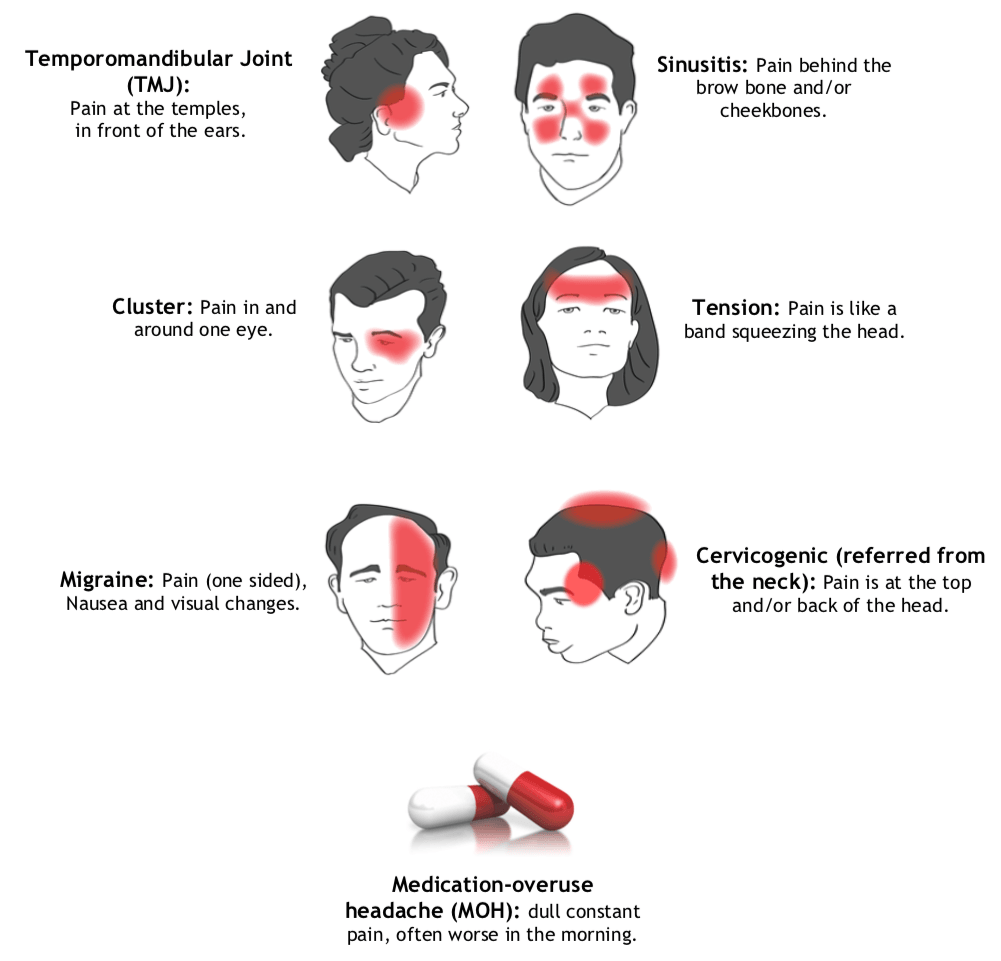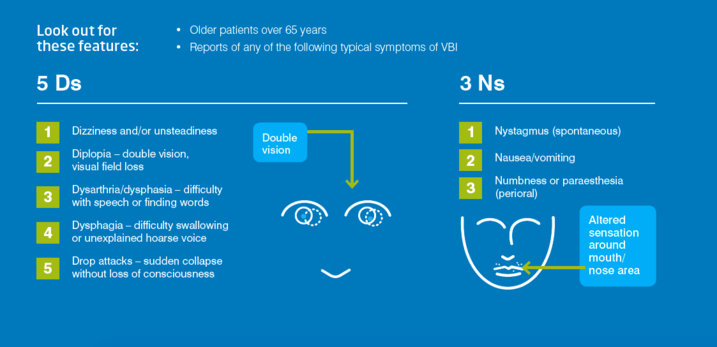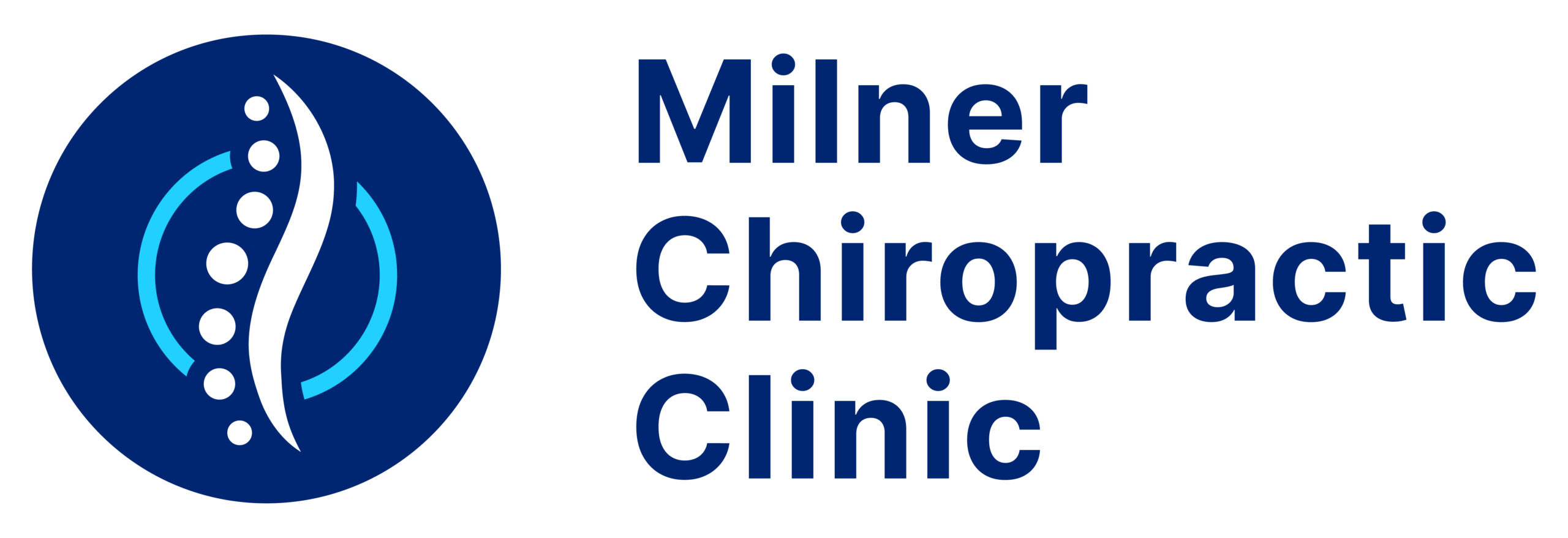How to Recognize 7 Types of Headaches
Headaches are a common condition that most of us experience during our lives. There are many different types of headaches, and they vary in terms of their location, severity and timeline. In fact, headache is the third most common reason for a patient seeing a chiropractor in North America. It is important to distinguish whether a given headache is occurring in isolation, or caused by other health concerns. While most headaches are benign in nature, other types of headaches can be caused by serious health conditions.

What are the Different Types of Headaches?
Headaches can be divided into two categories – Primary or Secondary headaches. Primary headaches are where a provocative activity cause the headaches (it is not a symptom of a headache). A secondary headache is where an underlying medical condition can cause head pain. The headache is considered a symptom of a sing or condition.
Primary Headaches:
Migraine
Cluster
Tension
Secondary Headaches:
Cervicogenic
Sinus
Dehydration
Medication-Induced

Types of Headaches
Migraine Headaches
A patient with migraine headaches typically feel intense throbbing on one side of their head, usually behind the eye. The person experiences sensitivity to light and sound. Nausea and vomiting can be common. About 1/3 people experience an ‘aura’ before the onset of the migraine which is a visual disturbance of flickering lights and partial vision loss. Migraines are recurrent and a migraine attack can last up to 3 days. Triggers can include: stress, dehydration, certain medications and foods, and loud noise.
Tension Headaches
Tension headaches are very common, with most people experiencing them as dull, constant pain on both sides of the head. They usually last for 30 minutes to several hours. They are usually caused by loud noise, lack of exercise, bad posture and poor sleep.
Cluster Headaches
Cluster headaches are severe and recurrent headaches that are 6x more likely in men than women. Patients describe an intense pain behind one eye. Other symptoms include sensitivity slight and sound, restlessness and eye watering. Cluster headaches usually last between 15 minutes to 3 hours. Episodes can last for weeks to months, and typically occur at the same time every day.
Cervicogenic Headaches
Cervicogenic headaches are secondary headaches, meaning they are caused by underlying problems in the neck and mid-back. Patients with this type of headache typically also suffer from neck pain and stiffness. Most of these headaches occur on one side of the head, starting from the back of the neck and radiating toward the front. Other symptoms include: decrease in neck range of motion, stiffness of the neck, pain in the shoulder and mid-back, and muscle trigger points that refer pain to the head.
Sinus Headaches
After having an allergic episode, or having a cold, you will be at increased risk of sinus infections and headaches. A sinus headache is a symptom of a sinus infection which causes pressure and pain in your face. However some sinus headaches are actually migraines with nasal symptoms. If you think your headache is being caused by a sinus infection, call your family doctor.
Dehydration Headaches
Dehydration headaches occur when the body does not receive the fluids it needs to maintain function. Headaches appear when other symptoms – including dizziness, thirst and a dry mouth persists. Pain usually subsides after drinking an adequate amount of water and rest.
Medication-Induced Headaches
Use of medication for other conditions can cause a vicious cycle of having headaches, and subsequently requiring more pain medication to relive the symptoms of the headache. To break the cycle of medication-induced headaches, a patient needs to consult their family doctor or a pharmacist.
What Causes Headaches?
Pain in the head generally results from pain signals arising form the brain and surrounding nerves and blood vessels. A variety of mechanisms can activate the nerves surrounding the muscles and blood vessels. However most types of headaches result is a contraction and dilation of the blood vessels supplying oxygen to the brain, hence the range in factors that can lead to headaches.
How do you evaluate headaches and determine a diagnosis?
The most important factor when evaluating the type of headache is to rule out a more serious medical condition (see section below). After you have ruled out red flags we will ask:
- When did the headaches start?
- How often do the occur
- What is the intensity of the headaches?
- How long do they occur for?
- Are they getting worse?
- How do they affect your sleep?
- Is there a family history of headaches?
- Is it on one side of the head or both?
- What activities were you doing before onset?
- What did you consume before onset (I.E. alcohol, caffeine)
What symptoms constitute a medical emergency?
Red flag symptoms are those that indicate a serious medical event. They require immediate medical attention.
- A new type of headache after the age of 40
- A new, severe and sudden headache (often described as crushing pain, or ‘the worst headache I have experienced’)
- Pain after a head injury, accident or fall
- A headache after an illness, with presentation of a stiff neck or severe
Neurological symptoms associated with the headaches are also cause to seek medical attention:
- Dizziness
- Difficulty speaking
- Difficulty swallowing
- Loss of balance
- Nausea
- Numbness or tingling
- Vision Changes (blurry vision or double vision)

The majority of headaches are not serious, however the challenge is that headaches that are a medical emergency do not always appear alarming. Therefore the most important step you can take is consult a medical professional if you have any headache symptoms.
In subsequent blog posts we will go over headache prevention and treatment, as managing headaches depend on the type of headaches we listed above.
For more information about headaches, refer to the links below:
Ontario Chiropractic Association – Headaches
https://chiropractic.ca/headaches/headaches/
The Cleveland Clinic – Headaches
https://my.clevelandclinic.org/health/diseases/9639-headaches


